Affiliate links on Android Authority may earn us a commission. Learn more.
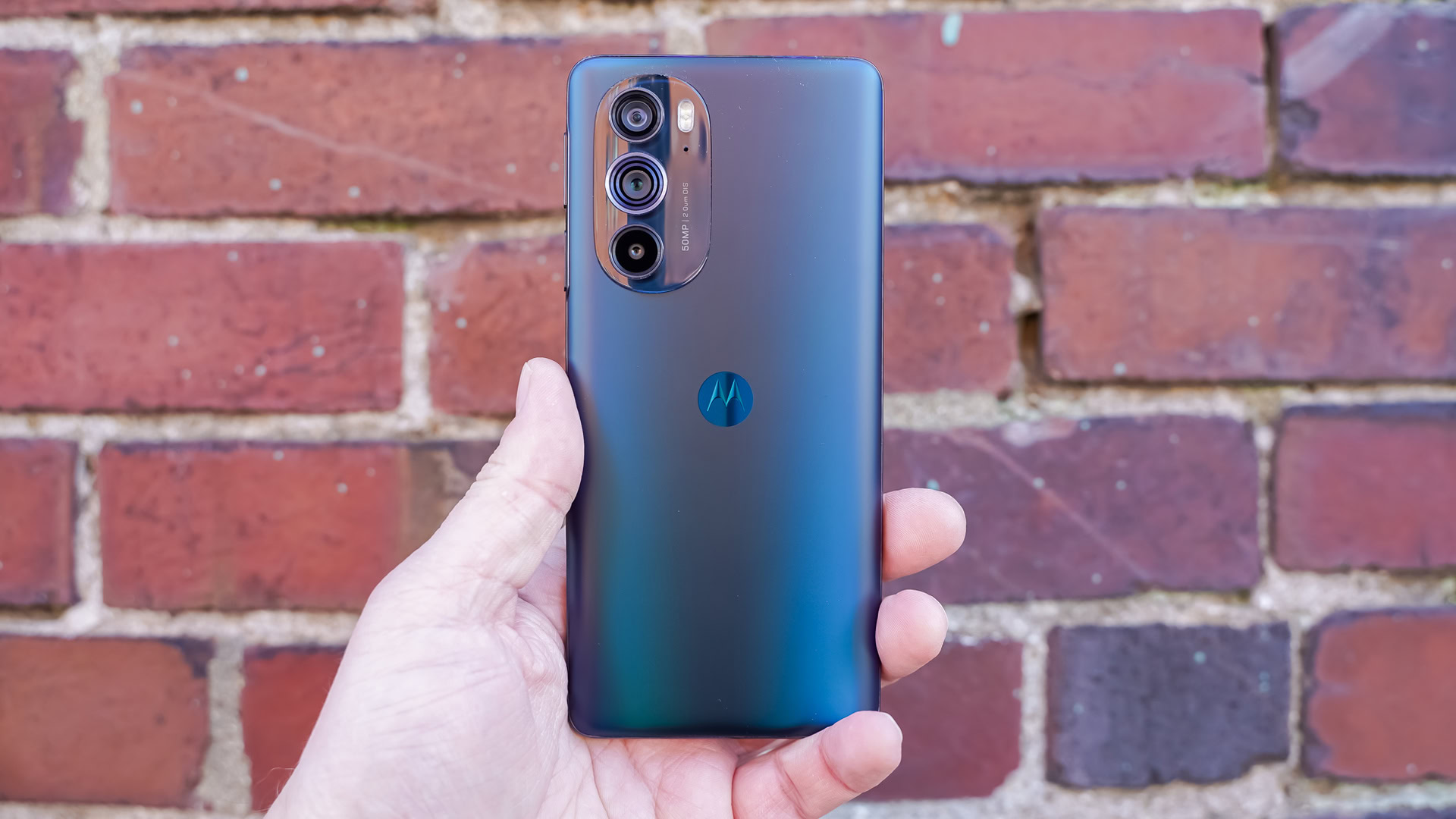
Motorola Edge Plus (2022)
MSRP:
What we like
What we don't like
Our scores
Motorola Edge Plus (2022)
Motorola refreshed its Edge Plus flagship smartphone for 2022 and hopes the upgrades are enough to tackle the likes of the Google Pixel series, the Samsung Galaxy S family, and other top-flight competitors around the globe. The Edge, now in its third year as Motorola’s high-end offering, banks on its high refresh-rate display, light-touch user interface, and advanced Ready For platform as points of differentiation. Are these enough to sway potential buyers? Find out in Android Authority’s Motorola Edge Plus (2022) review.
Update, June 2023: We’ve updated this review with new alternative devices worth checking out.
What you need to know about the Motorola Edge Plus (2022)
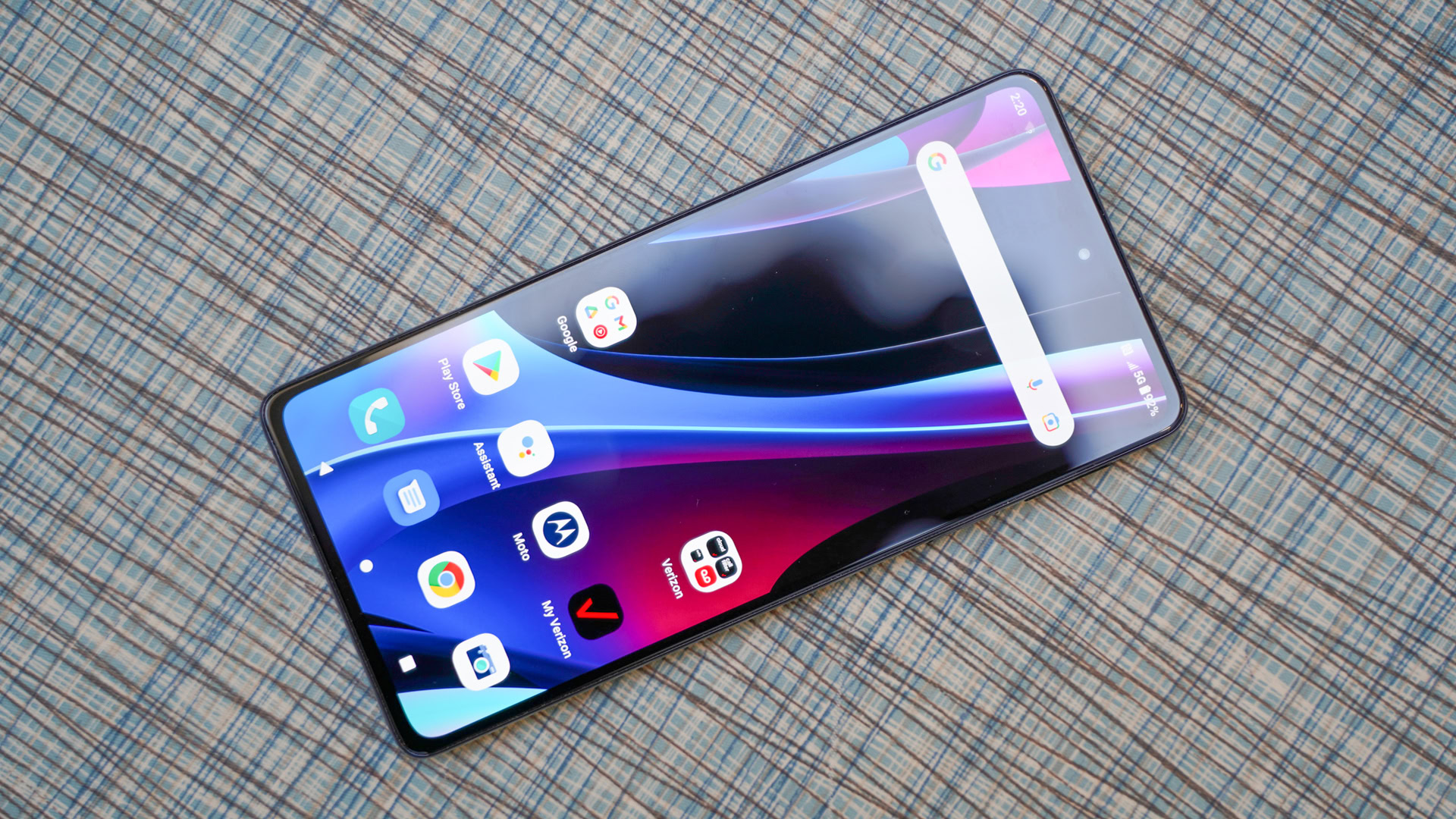
- Motorola Edge Plus 8GB/128GB (Verizon): $849.99
- Motorola Edge Plus 8GB/512GB (Unlocked): $999.99
The Motorola Edge Plus (2022) is the company’s top device for 2022 in the US. It’s also the second iteration of the Edge Plus line following the original model in 2020, as we didn’t see a Plus variant in 2021. While it carries over a lot of the basic features from the vanilla Motorola Edge (2022), it includes several significant — and much-needed — improvements that should help it fare better against other flagships. The kicker, however, is the brand new price tag that accompanies those upgrades. Where the original Motorola Edge Plus and more recent entries in the Edge series came in below the $800 mark, the 2022 model jumps unabashedly into a more premium tier with some components that are decidedly less than premium.
Motorola originally had 2022 flagships in its sights, but the landscape has since changed. Now the Pixel 7 Pro, Galaxy S23 Plus, iPhone 14 Pro, and OnePlus 11 hover near the top of the market. Each of these devices pack a handful of core features that are often expected from thousand-dollar flagships. Motorola’s 2022 phone, though, lags behind in ways that may make it a hard sell against these category leaders — but more on that in the rest of the review. To Motorola’s credit, it’s since introduced the Edge Plus (2023), which catapults the brand back into the conversation with several phones listed above.
Rather than rely on a single name for its flagships, Motorola typically rebadges its phones for different markets. In North America and select other areas, its premiere phone will be known as the Motorola Edge Plus. In parts of Asia, Europe, India, Latin America, and the Middle East, it is to be branded under the Motorola Edge 30 Pro name.
There are a number of different configurations. The base version packs 8GB of RAM and 128GB of storage, though Motorola has suggested that some versions will have up to 12GB of RAM and up to 512GB of storage. There are also two 5G variants, one that includes mmWave and sub-6GHz support (North America, Verizon only) and one that includes only sub-6GHz (unlocked and global). The Motorola Edge Plus (2022) is available in two colors: Cosmos Blue and Stardust White.
In the US, the 8GB/128GB model is sold primarily by Verizon Wireless for $849.99. Motorola also sells an unlocked 8GB/512GB version of the phone online from Motorola, Amazon, and Best Buy for $999.99, though the phone is often on sale, going for al low as $699. Motorola hasn’t shared a complete pricing breakdown for the remaining potential configurations.
Does the design stand out?
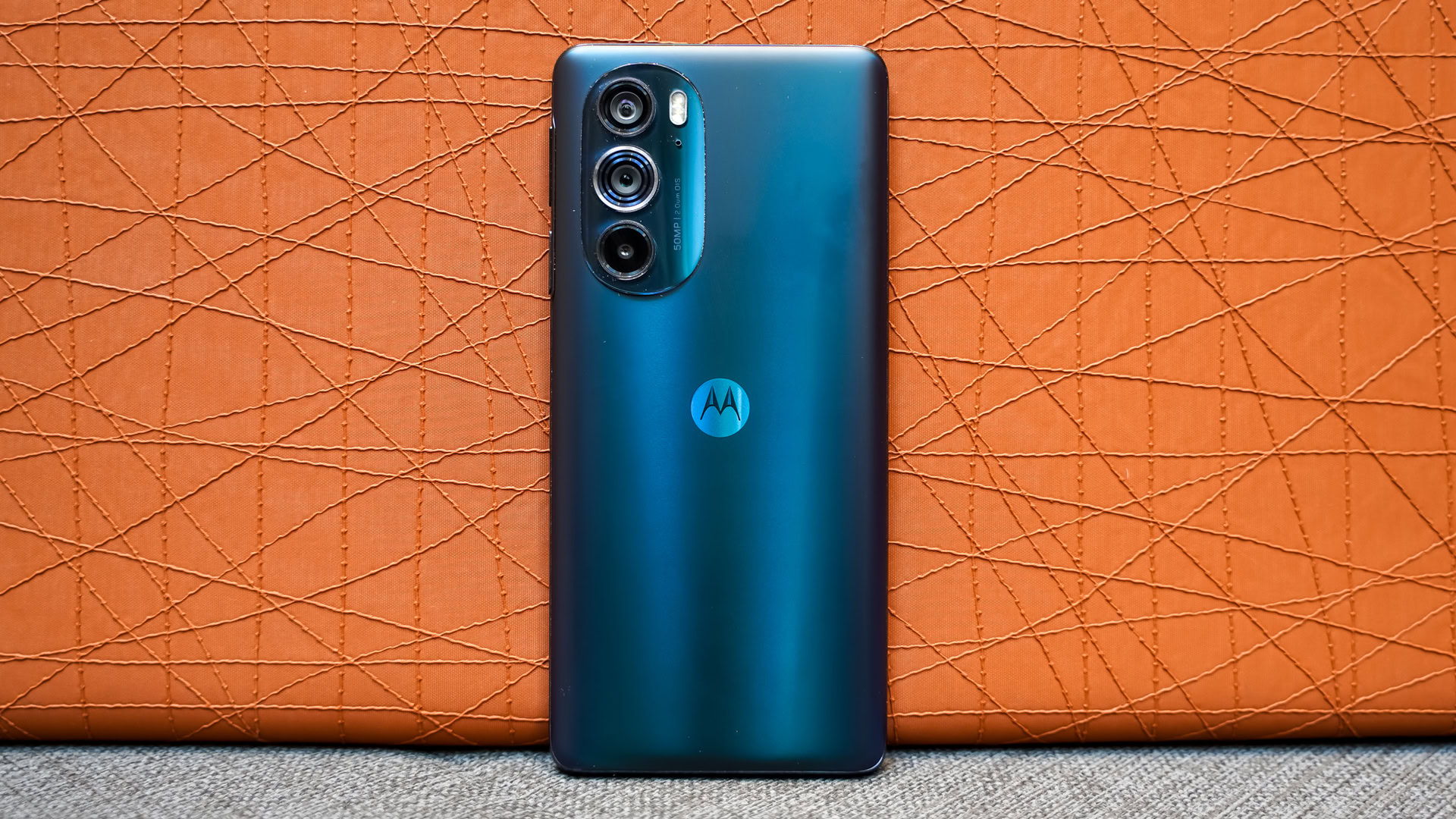
Motorola continues to bewilder with respect to its high-end smartphone strategy. When the company first launched the Edge series in 2020, it had two offerings: a flagship model and a sub-flagship model, each with an appropriate price tag. The Motorola Edge Plus (2020) was a beautifully crafted glass and metal sandwich. In 2021, Motorola trimmed its Edge portfolio to a single model that was more of a sub-flagship. That phone lost the high-end materials in favor of cheaper glass and polycarbonate. Now, in 2022, Motorola is once again pitching the Motorola Edge Plus as a true flagship — but it forgot to bring a flagship design along for the ride.
The first thing I said to myself when I pulled the Edge Plus from its box was something along the lines of, “Huh, this doesn’t feel like a high-end phone.” And it’s not, at least not compared to other premium phones. Like its 2021 predecessor, the new Edge has a plastic frame. Motorola says the frame is light and strong, and I’m sure it is. Many of the Edge’s peers, though, boast metal frames that boost their perceived premium factor.
The front panel of the Edge Plus is made from 2013-era Gorilla Glass 3, rather than the modern Gorilla Glass Victus that graces the front of many 2022 flagships. This is especially bizarre when you consider that the original Edge Plus from 2020 had a Gorilla Glass 5 panel. Thank goodness Motorola at least opted for Gorilla Glass 5 for the rear glass. Shame that it went and sullied that glass with a frosted coating that makes it feel like plastic. True, you won’t get any fingerprints on the satin rear panel, but that’s little comfort when you have a high-cost phone that feels so cheap. People who pay top dollar expect the best experiences. The Edge Plus ain’t that.
Motorola didn’t do too much to differentiate the phone from the pack, either — from a distance, it could be any phone. The front is a flat piece of glass that’s fitted into the black frame. The frame is fairly thick along the side rails and widens a little at the top and bottom. Motorola picked an aggressively curved, smooth piece of glass for the back panel. The Cosmos Blue colorway you can see pictured changes shades depending on the angle at which you hold the phone. It sometimes comes across as more of a green or aqua color than blue. Motorola has long preferred these deep blue colors, but we’re glad there’s at least a white option; it might be time for Motorola to move on from blue.
Motorola didn't do too much to differentiate the phone from the pack and it falls behind with some flagship essentials.
The Motorola Edge Plus (2022) is a big piece of hardware, but not the largest. At 163.1 x 76 x 8.8mm, you’ll find it’s smaller than phones such as the Google Pixel 7 Pro and Samsung Galaxy S23 Ultra, but larger than the Galaxy S23 Plus. Motorola also kept the weight down at just 196g. That plastic frame surely helped the phone from becoming too heavy.
The controls could be better. For starters, the power button and volume toggle are placed way too high up the right edge of the phone. If you have smaller hands, these buttons could be a hassle to reach day in and day out. The volume toggle is also too close in size to the power button and the two keys are only a few millimeters apart. This makes it too easy to hit the power button when you mean to hit the volume toggle. I can’t tell you how many times I accidentally turned the screen off when I intended to lower the volume and vice versa. The power button doubles as a fingerprint reader. I didn’t have any trouble training it and it worked very well for unlocking the phone.
Camera modules are getting harder and harder to design. With multiple lenses, flashes, and other components, arranging them all in a way that doesn’t look like a jumbled mess can be a challenge. The Edge Plus didn’t quite rise to meet that challenge. The entire module takes the shape of an oval with curves that are at odds with the squarish bend of the corner into which the module is tucked. The three camera lenses are arranged vertically, but because they aren’t centered in the oval the module looks imbalanced. Most people likely won’t pay it much mind, but there’s definitely room for improvement as far as the design is concerned. Perhaps what’s most important to people is that the module is relatively flush with the back surface.
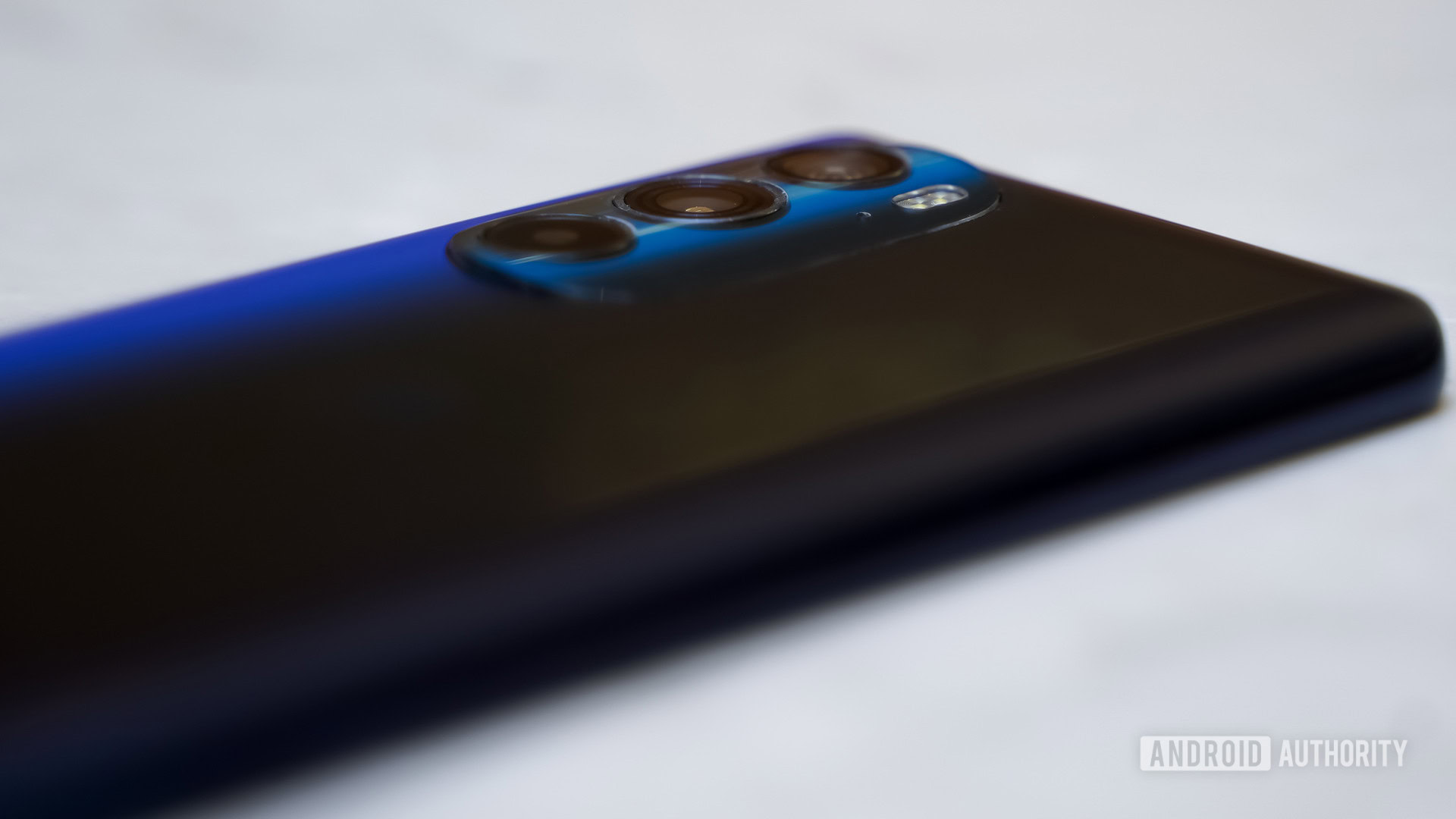
Haptics of the phone are decent. Motorola gives you lots of room to tweak the feel of the phone’s vibrations. I found I needed to make a few adjustments to get them where I wanted them. Out of the box they are somewhat harsh.
Even with all the issues we’ve mentioned so far, we’ve saved the worst for last. The biggest transgression of the Edge Plus’ design is the poor IP rating. Like the bulk of semi-premium Motorola phones released over the last decade, the Edge Plus supports a rating of just IP52, which makes it resistant to light splashing and only “limited ingress” protection against dust. That’s well short of the immersion protection and “no ingress” that an IP68 certification guarantees you with similarly-priced phones, and even many that cost significantly less. This was a concerning omission with the original Edge Plus. Two years later, and with an increased price tag, it’s unacceptable.
At this point, you might be wondering what, if anything, has Motorola upgraded here. Most of the improvements year over year are hidden under the hood. That leaves the Motorola Edge Plus (2022) looking and feeling somewhat like an also-ran in the fierce market for high-end flagships.
Is the screen improved?
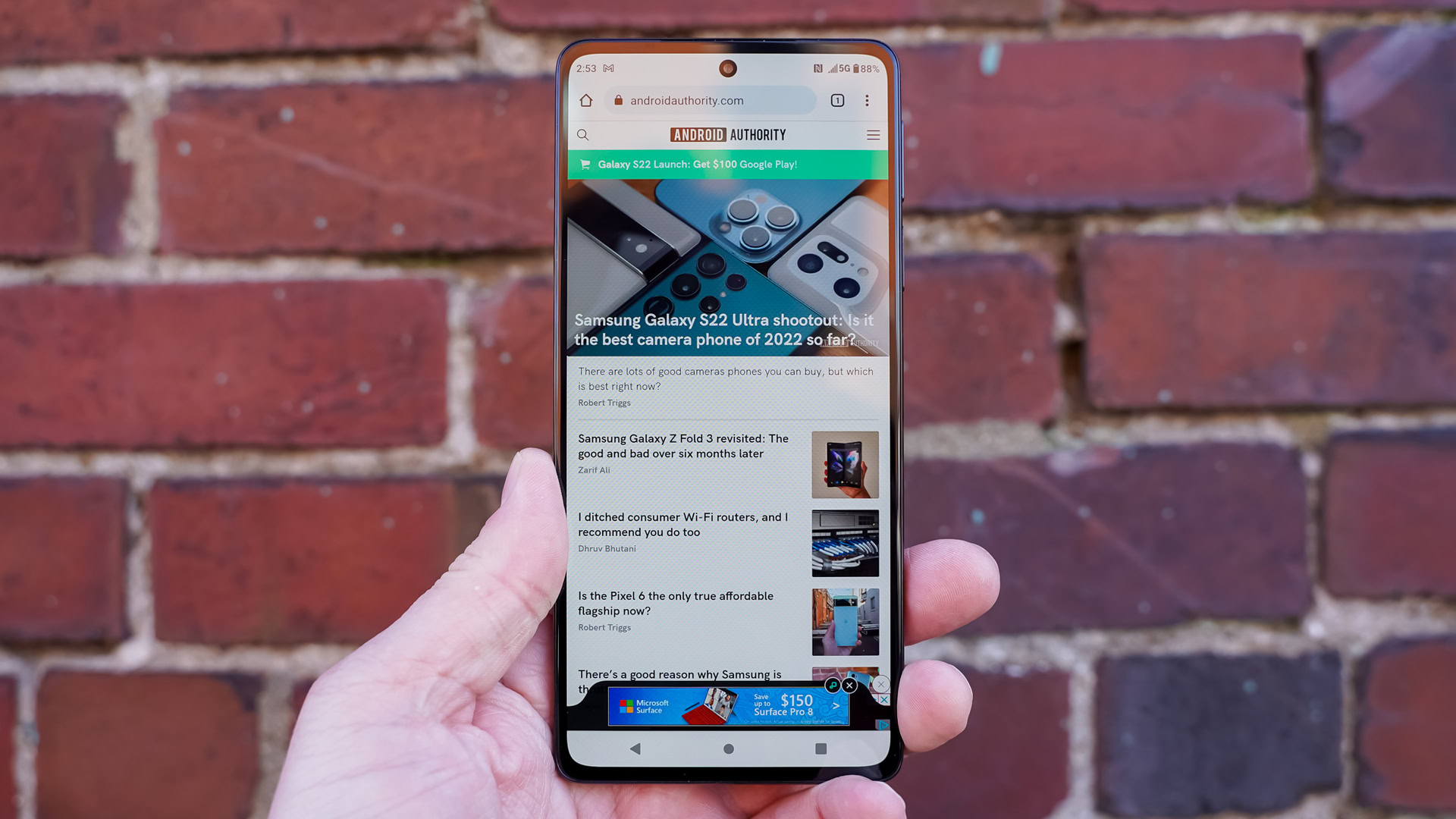
While the design of the Edge Plus (2022) may be stuck in the past, Motorola made some welcome upgrades to the display. Though it reduced the size and resolution fractionally, the result is a better-looking panel thanks to a technology shift.
The display measures 6.7 inches across the diagonal, which is down 0.1 inches compared to the 6.8-inch panel on the 2021 Edge, but the same size as the original Edge Plus. This change has barely impacted the resolution, which sticks to FHD+ (with a similar pixel density to previous Edge phones), though the aspect ratio has shifted to 20:9. Some flagships out there might pack 1,440p resolution, but the resolution is more than adequate for a screen of this size. The Moto Edge Plus (2022) screen offers all the pixels you need to view websites, social media apps, and high-quality video content.
The most significant change is the return to OLED, as the non-Plus Edge phones have stuck to LCD panels. This gives the Edge Plus richer colors and better contrast. It also supports HDR 10 Plus content. There’s no question it’s a more appealing display with respect to dynamic range and saturation. The screen is also incredibly bright and easy to view indoors and out.
Motorola carried over the same maximum 144Hz refresh rate from the 2021 Edge. This exceeds the 120Hz rate offered by many competing phones, but there’s more at play here. There are three settings for the screen’s refresh rate. The first is an automatic mode that Motorola says is controlled by AI to deliver the best balance of performance and battery life. With this option selected, the screen’s actual refresh rate ranged from 48Hz to 120Hz in our testing depending on the content on the screen. Then there’s a static 60Hz setting which locks the phone to a 60Hz rate at all times, resulting in the best possible battery life. Last, there’s the dynamic 144Hz mode for the smoothest experience. Like the automatic mode, in this setting, the screen ranged from 48Hz to 144Hz depending on the activity at hand.
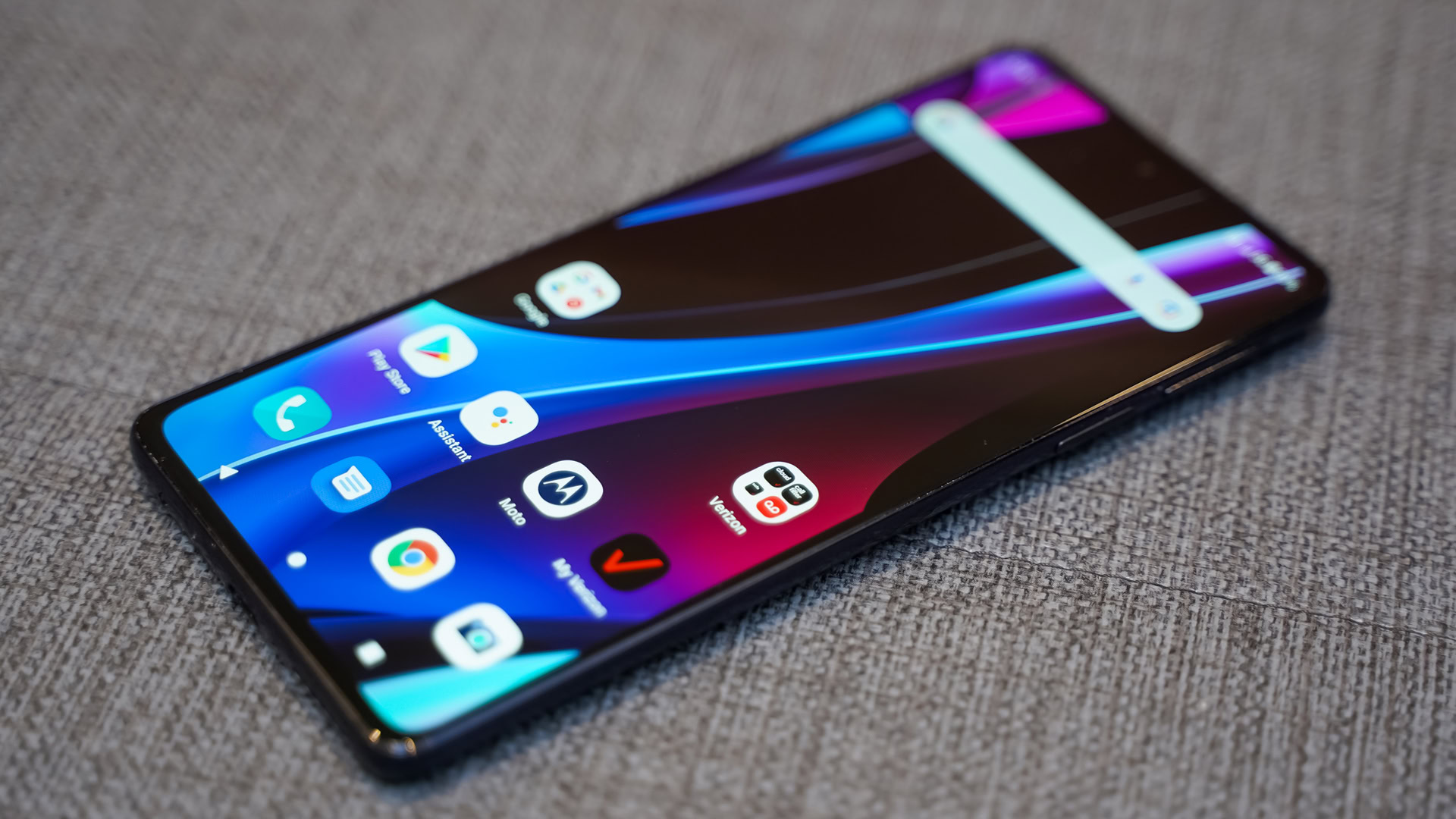
I could definitely tell the difference between 60Hz and 120Hz, and between 60Hz and 144Hz, but the difference between 120Hz and 144Hz is too minor to really see with the naked eye. Both the 120Hz and the 144Hz settings showcased incredible smoothness when scrolling around menus and supported apps. Motorola may technically be offering a faster refresh rate than many competitors outside of niche gaming phones, but it’s not a reason to rush out and buy one.
Motorola selected a fine display for the Edge Plus (2022).
Sticking with the impressive on-paper specs, the Motorola Edge Plus’ screen also has a fast touch response rate. The display can register taps at up to 360Hz when you’re using your finger or up to 240Hz when using the optional stylus. Strangely, the screen’s touch sampling rate is actually slower than the 576Hz rate of the 2021 Edge, but it’s still nice and responsive, which is especially useful for gamers.
Motorola also offers Edge Plus owners plenty of options to tweak and manage the screen’s behavior. You can adjust most facets, such as light/dark mode, color profiles, refresh rate, blue light saturation, and more.
Motorola selected a fine display for the Edge Plus (2022). It is bright, contrasty, and has good color and resolution. This is one part of the phone that performs well in the 2022 flagship space.
How long does the battery last?
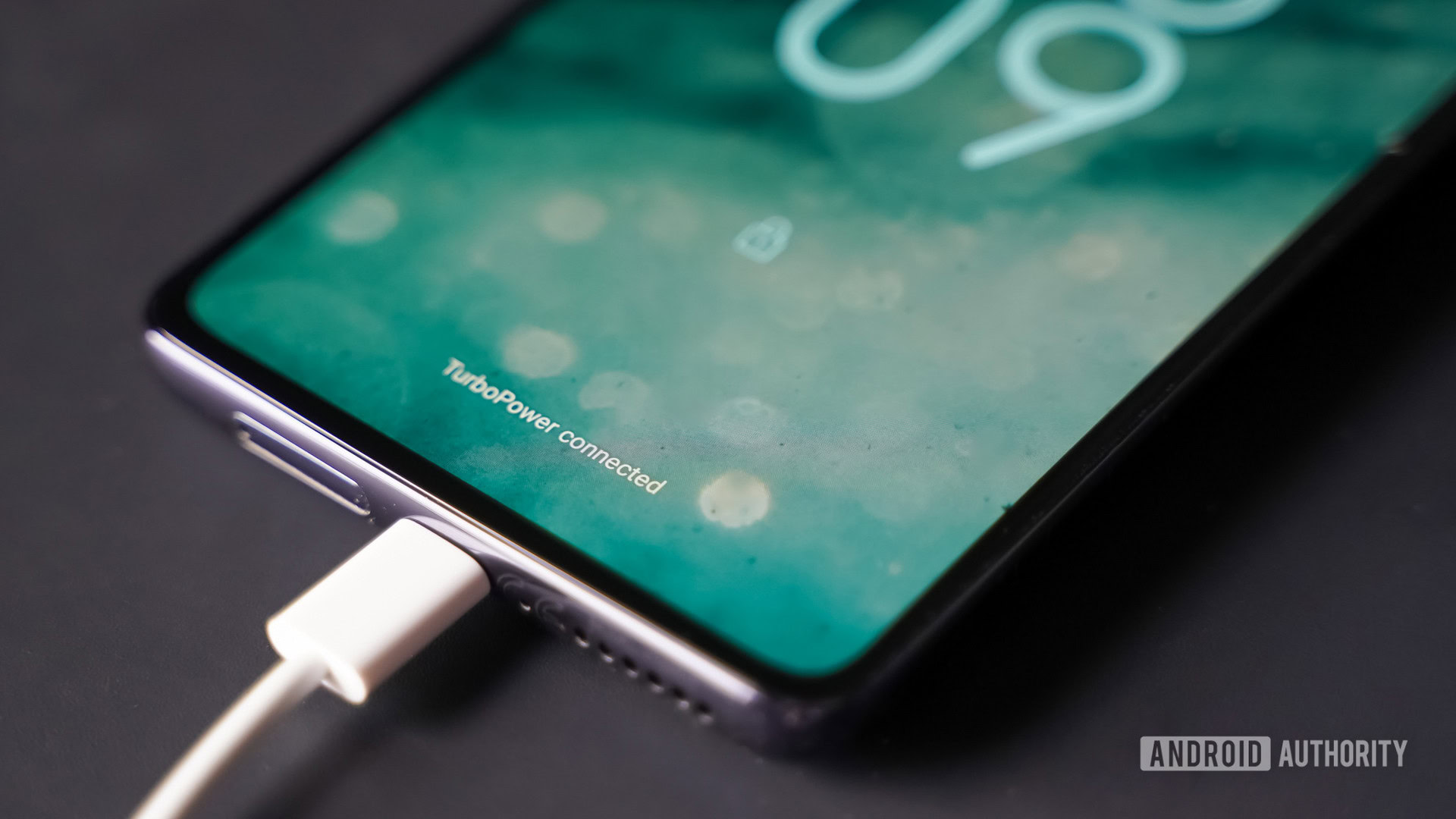
The Edge Plus (2022) has a 4,800mAh battery that’s right in line with the capacity of most competing devices, but battery life isn’t necessarily all about size. Plenty of factors determine what sort of battery life you’ll get from a phone and managing all of them is a delicate dance that some phone makers are better able to coordinate than others. And if there’s one thing Motorola knows how to do, it’s to build a battery that lasts and lasts.
Motorola claims the Edge Plus (2022) is a two-day phone. It isn’t quite, but it’s certainly a one-and-a-half-day phone. The Edge Plus easily cruised through a single day with plenty of power to spare and often pushed through midday the following day before requiring a recharge. That tops many of today’s leading phones, which typically need to be charged nightly or first thing in the morning. We pushed the phone pretty hard, too. In addition to regular smartphone stuff like reading email, scrolling through social media sites, and viewing plenty of YouTube, we made sure to spend lots of time with the camera, and even used the phone as a mobile hotspot for a while.
The Edge Plus (2022) easily cruised through a single day with plenty of power to spare.
The phone powers up relatively quickly, though not as rapidly as some of the competition. It supports wired charging up to 30W and actually ships with a 30W “Turbocharger” plug in the box. That’s a bonus considering how many phone makers no longer include chargers with their phones. Using the 30W brick, the Edge Plus took about an hour to recharge fully from zero. It reached a 50% charge swiftly, in about 22 minutes, but then slowed to charge the remaining 50%. While the likes of OnePlus, OPPO, and Xiaomi have pushed full recharging times into the 20- to 30-minute range, around an hour for a full top-up is a respectable figure.
The Edge Plus supports wireless charging at up to 15W. Motorola sells its own 15W wireless charging pad, though the Edge Plus will work with any Qi-compatible pad. In our tests with the Motorola 15W Turbopower wireless charging pad it took the phone about 90 minutes to reach a full charge from zero, which is pretty typical for wireless charging. This is one area in which the Moto Edge Plus earns its Plus moniker as the regular Edge (2021) did not support wireless charging. Last, the phone can handle reverse wireless charging at 5W. This feature can be useful in a pinch to give your wireless headphones some life. It’s not the fastest we’ve seen, but it worked as advertised.
Motorola’s 2022 flagship may not charge as fast as many of its rivals, but outside of the latest iPhones, it generally outlasts the bulk of them on a daily basis. For our money that’s what really counts.
How powerful is the Motorola Edge Plus (2022)?
Where the outgoing 2021 Motorola Edge had an upper mid-range chipset, the 2022 Edge Plus returns to the strategy of the first Plus model and adopts the very best Qualcomm silicon available at the time of launch — in this case, the same Snapdragon 8 Gen 1 processor that’s in the majority of competing flagships. This is a must-have at this price point and we’re glad to see Motorola is aboard.
We do have a slight niggle to pick with Motorola’s memory and storage options. Based on its partnership with Verizon, the bulk of Edge Plus phones sold in the US are likely to be the 8GB/128GB variant. That’s really the lowest acceptable arrangement at this price point. And though Motorola sells an unlocked 8GB/512GB version, the company’s lack of clarity on the availability of models with 12GB of RAM is disappointing. Our evaluation unit had 12GB of RAM and 256GB of storage, but that isn’t a model you’ll find on sale at Verizon or unlocked from third-party retailers in the US.
As a daily driver, the Edge Plus is, of course, great. The phone ran perfectly over the course of a week with no lag, noticeable slowdowns, or crashes. It handled basic apps and power-hungry games with no problem.
The Edge Plus didn’t quite manage to equal its 8 Gen 1 peers when it came time for benchmarking. The CPU scores were about on par with competing 8 Gen 1 phones, but the Edge Plus falls behind slightly in the GPU stakes. Benchmarks aside, the Edge Plus ran really well during our evaluation period. Moreover, it delivers a huge boost in performance over Motorola’s 2021 flagship and it’s close enough to today’s top-tier phones to be competitive.
Did Motorola improve the cameras?
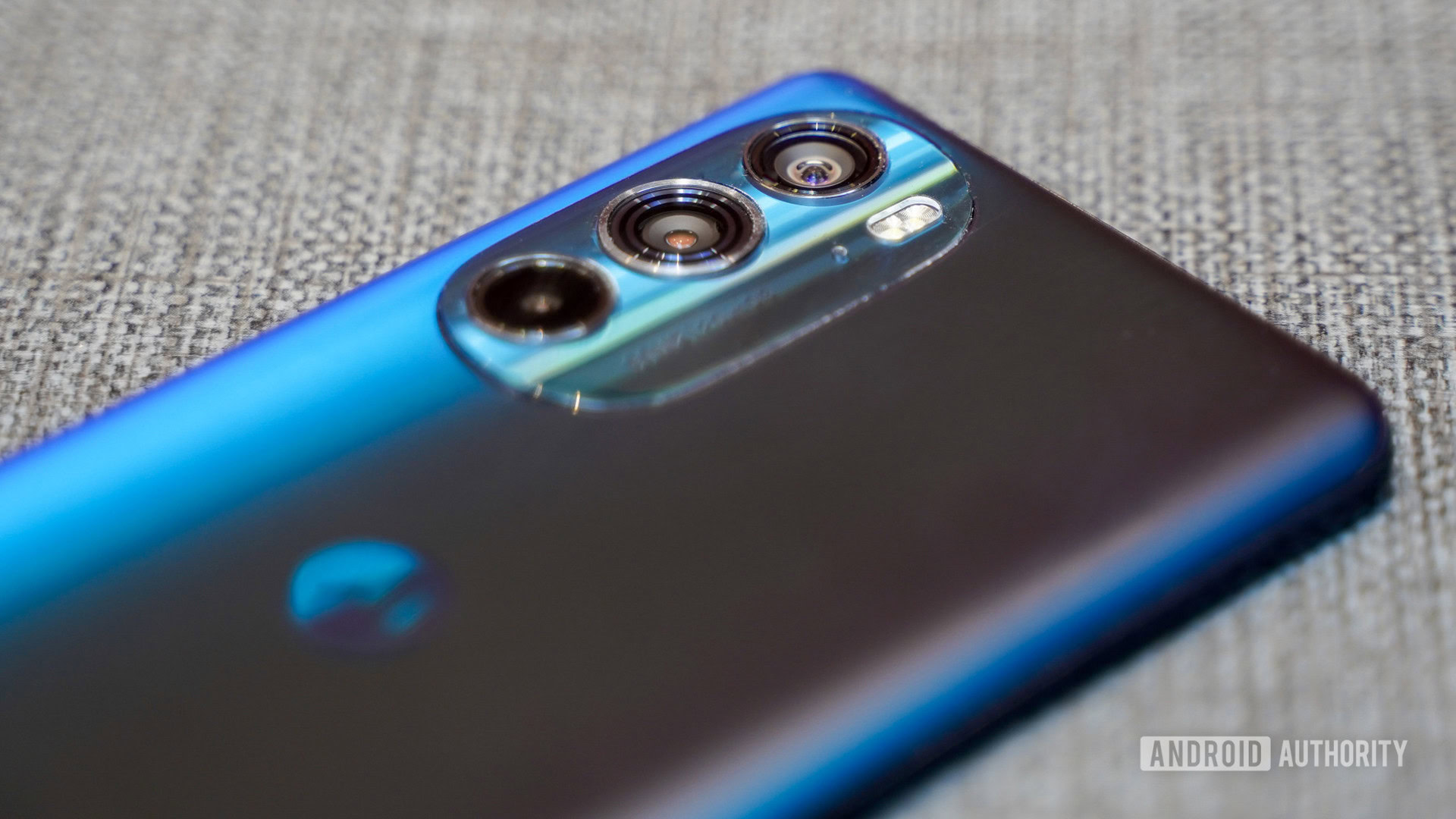
Motorola completely reimagined the camera system on the Edge Plus. Gone is the 108MP main sensor and underwhelming ultrawide shooters found on its predecessors in favor of a dual 50MP arrangement that better serves today’s mobile photographers.
The main shooter has a 50MP sensor at f/1.8. It bins shots down by a factor of four so you get 12.5MP images with an effective pixel size of 2.0μm. It features OIS and omni-directional PDAF. The ultrawide camera also has a 50MP sensor at f/2.2 which bins down to 12.5MP with an effective 1.28μm pixel size. This lens has a 114-degree field of view and doubles as a macro camera with the ability to focus on subjects as close as 2.5cm. Last, you get a 2MP depth camera at f/2.4 with 1.75μm pixels to assist with portrait shooting.
Before we get to the samples, we have to say it’s a real shame that the Edge Plus (2022) is missing a telephoto lens, especially considering the original Edge Plus had a dedicated 3x optical zoom camera. This already puts the Edge Plus (2022) behind almost every phone in its price range.
Most daytime photos I captured with the Edge Plus’s main camera (above) looked good. Focus was sharp and color was spot on. Exposures when outdoors were excellent. My only complaint would be the small amount of noise that’s visible in images when you drill in close. This applies to both the main and ultrawide shooters, which were approximately equivalent with respect to color, tone, and appearance. Motorola kept edge distortion mostly in check on the ultrawide shots (below), which not all competing phones manage to do.
Zooming from 1x to the 10x maximum is all accomplished digitally via the main camera. I wish the zoom picker had notches at 2x and 5x, but it’s a generic slider. Unsurprisingly, zoom is not the Edge Plus’s forte. Shots zoomed as close as 2x lose sharpness and gain noise. Anything between 5x and 10x is really soft and grainy. You can get away with 5x shots in a pinch in strong lighting, but most 10x shots were not worth keeping. The Pixel 6 Pro, Galaxy S22 Ultra, iPhone 13 Pro, and their successors all have telephoto lenses that deliver excellent zoom at least to 3x and hybrid zoom beyond that, so this leaves the Edge Plus wanting. You can see samples from across the entire zoom range below.
Photos taken indoors or in low-light situations add noise across the board. Color and sharpness remain decent, but exposure starts to suffer a little. Auto HDR is on by default but I found it struggled to find balance in some situations. You can seen in the mall shots below that the lower portions of the photo are really dark.
The Edge Plus has a dedicated night mode and it is pretty terrible. These shots are a total disaster. The longer exposures are devoid of detail and full of noise. You can see how the phone treated scenes when taken with and without night mode in the samples below. At night, the Edge Plus camera is simply not competitive.
Few phones offer selfie cameras with as high a megapixel count as the Edge Plus’ 60MP front-facing shooter. It has an aperture of f/2.2 and bins photos down by a factor of four so you get 15MP images with a 1.2μm pixel size. Selfies look pretty rough. I had to double check the shots below to be sure there wasn’t a strange analog filter applied to them. The selfies have incredible amounts of noise, bleached colors, and really soft focus. The portrait mode stripped out even more color and lost all dynamic range. These shots are just not what we expect to see on a 2022 premiere device. And the really low-light shot is among the worst I’ve seen.
Motorola boosted video capture capabilities to 8K at 24fps. Despite the fact that most people still won’t have 8K screens, this is a nice upgrade for future-proofing. More importantly, the phone can record 4K video at 60fps, which is the real benchmark. You can snag HDR 10 Plus video as well, though it’s limited to 30fps. The video I captured looked really good. No matter the resolution or frame rate, the results came across clean, with good color, exposure, and focus. You’ll see way more noise in low-light scenarios and colors start to look a little dull.
Motorola completely reimagined the camera system on the Edge Plus (2022), but it's still well behind the very best camera phones.
Taken as a whole, Motorola improved the core photography suite of its flagship phone, but it’s well behind the very best camera phones. The lack of a telephoto lens, in particular, is a head-scratching omission and the low-light performance and selfies are simply not up to par.
You can view full-resolution photo samples in this Google Drive folder.
Anything else?
- Software: The Edge Plus ships with Android 12, and a fairly clean build at that. It retains all of the core Android 12 features and it acts closely to what you’ll see on a Pixel phone (albeit without the Pixel exclusive extras). The one exception is the app drawer, which is highly irritating to use by default. I had to turn off most of the features (two sets of app suggestions, really?) in order to get it to a usable state. Android 12’s Material You design peeks through here and there, though Motorola has cooked up its own process to coordinate wallpapers and colors. Thankfully, the majority of the extras you get from Motorola are bundled into a dedicated Motorola app that you can ignore or put to use at your leisure. These include the My UX-specific stuff, such as twisting the phone to launch the camera or multi-finger gestures to take screenshots or enter split-screen mode. Motorola’s flagship has since received Android 13, which brought minor tweaks to the customization options.
- Updates: Motorola’s update commitment to the Edge Plus (2022) is questionable. The company says it will deliver two years of operating system updates and three years of security updates to the Edge Plus, the latter of which will likely be offered on a quarterly basis, rather than monthly. Google and especially Samsung are setting a higher standard for the length of support for flagship Android phones. This push has encouraged other OEMs like Xiaomi and OPPO to improve their update commitments to at least three years for their flagship phones, leaving Motorola’s premium offering in a rough spot. Cadence is also a concern here — quarterly security updates aren’t what you’d expect on a premium phone. Motorola says it is always evaluating its customers’ needs, and we hope it reconsiders. It’s possible that it will since the newer Motorola Edge (2022) will get three years of OS and four years of security updates; however, when we asked Motorola if it plans on extending the update promise for the Edge Plus (2022) to at least match that of the Moto Edge (2022), the company would only say: “we’re constantly evaluating our strategy.”
- Bloatware: We tested a Verizon-branded variant of the Edge Plus (2022), one that was riddled with ridiculous bloatware. There were no fewer than eight games preinstalled on the phone in addition to bloat apps such as Verizon Messages Plus, Pluto TV, Cash App, and more. More than a few of these apps delivered unnecessary and ad-like push notifications. Some of these non-stock apps can be deleted and some, sadly, cannot. It’s a stark reminder that carrier-bought phones can be super annoying. We expect the unlocked model will ship with fewer unwanted pre-installed apps.
- Audio: The Edge Plus ships with stereo speakers that support Verizon Adaptive Sound and Dolby Atmos. This means you can select from a handful of Verizon-tuned presets to adjust the sound based on what you’re doing, such as listening to music, watching movies, or playing games. The speakers are clear and loud. You won’t hear the most bass ever, but there’s enough to get the point across when things go boom in your favorite movies. I could take or leave Verizon Adaptive Sound, as I often prefer to tune the sound myself. The phone also supports Qualcomm Snapdragon Sound. Provided you’ve got a pair of compatible wireless headphones, you’ll get the best that Qualcomm has to offer via Bluetooth. Unlike the original Edge Plus, the 2022 model does not have a headphone jack.
- Connectivity: The Verizon model we tested (using a Verizon SIM) supports mmWave and sub-6GHz 5G, and speeds were generally very good throughout. The phone can handle T-Mobile’s sub-6GHz service, but not its mmWave spectrum as the unlocked model only supports sub-6GHz 5G service. The Edge Plus does not support AT&T 5G for the time being and would be limited to AT&T’s 4G LTE service. The phone also supports Wi-Fi 6E and Bluetooth 5.2 connectivity, which is good for future-proofing. There’s no word on ultra-wideband support, but considering the limited use cases that isn’t a deal-breaker.
- Ready For: Ready For is Motorola’s Samsung Dex-like interface for connecting the Edge Plus to external displays or Windows computers. It lets you share files and images, use the phone as a webcam, as well as share a mobile data connection to select peripherals. You have to have a device that accepts Miracast (wireless), or HDMI or USB-C DisplayPort (wired) in order to get it working properly. It’s a little janky, but I was able to get it up and running on an external display I have on hand. It’s passable to use but hardly worth the effort as far as I’m concerned. Dex is certainly more capable (though that’s not saying much), and a tablet of just about any variety is much more useful.
- Stylus: The Edge Plus is compatible with an accessory called the Smart Stylus ($79). The Smart Stylus lets Edge Plus owners “edit photos, jot notes, and navigate with pinpoint precision.” It goes hand-in-hand with the Moto Note app for note-taking. The stylus can do tricks like convert your handwriting to text in any field, snap photos or take video with a push of a button, and even switch cameras from rear to front with a double-press of the button. The Smart Stylus acts as a remote and integrates seamlessly with Ready For if you want it to act as a mouse. The Smart Stylus comes with a folio case that holds the stylus and acts as a stand if desired. Last, the case includes a preview pane so you can still view notifications and incoming calls. The Stylus Plus Folio Bundle for the Motorola Edge Plus (2022) is available from Motorola.com
Motorola Edge Plus (2022) specs
| Motorola Edge Plus 2022 | |
|---|---|
Display | 6.7-inch pOLED 20:9 aspect ratio FHD+ resolution (2,400 x 1,080) 144Hz refresh rate |
Processor | Snapdragon 8 Gen 1 |
RAM | 8/12GB LPDDR5 |
Storage | 128/256/512GB |
Power | 4,800mAh battery 30W wired charging 15W wireless charging 5W reverse charging |
Cameras | REAR: - 50MP wide (1.0μm, ƒ1.8, OIS) - 50MP ultrawide (0.64μm, ƒ2.2, 114-degree FoV) - 2MP depth (1.75μm, ƒ2.4) FRONT: - 60MP wide (0.6μm, ƒ2.2) |
Video | REAR: - 8K at 24fps - 4K at 60fps - FHD at 960, 240, 120fps |
Audio | Stereo speakers Dolby Atmos support Verizon Adaptive Sound Snapdragon Sound Three microphones |
Connectivity | 5G (sub-6GHz and mmWave) Wi-Fi 6E Bluetooth 5.2 NFC support |
Security | Side-mounted fingerprint sensor |
Software | Android 12 My UX |
Materials | Corning Gorilla Glass 3 front Corning Gorilla Glass 5 back Polycarbonate frame |
Durability | IP52 splash-resistance |
Dimensions and weight | 163 x 75.9 x 8.79mm 196g |
Colors | Cosmos Blue Stardust White |
Value and competition

Once again, Motorola has made a bit of a mess of the value proposition for its primary phone. The company is selling two distinct versions of the phone that are separated by a handful of specs and $150. The Verizon version ($849) packs mmWave 5G, but is limited to 8GB of RAM and 128GB of storage. The unlocked model ($499 at Amazon), conversely, loses mmWave but, in the US at least, proffers 8GB of RAM and 512GB of storage. The availability of the 12GB RAM models is currently a mystery.
Competing flagships in this space typically run from $899 to $1,099 before accounting for storage variants. The lower-cost Verizon model of the Edge Plus at first seems like a bargain, but let’s not forget the less-than-premium experience offered by the plastic frame, outdated glass, and lowly IP rating, as well as the missing telephoto camera and mmWave 5G support. Also, Verizon’s version is limited with respect to memory and storage, and is packed with bloatware.
If you’re weighing the $849 Verizon version, you may be better served by the Google Pixel 7 Pro ($530 at Amazon). The Pixel has a more distinct and premium build, a higher resolution display, a killer camera, and a more robust software/update package. The Edge Plus bests the Pixel in processor performance and battery life, but it’s not enough to tip the balance away from Google’s best.
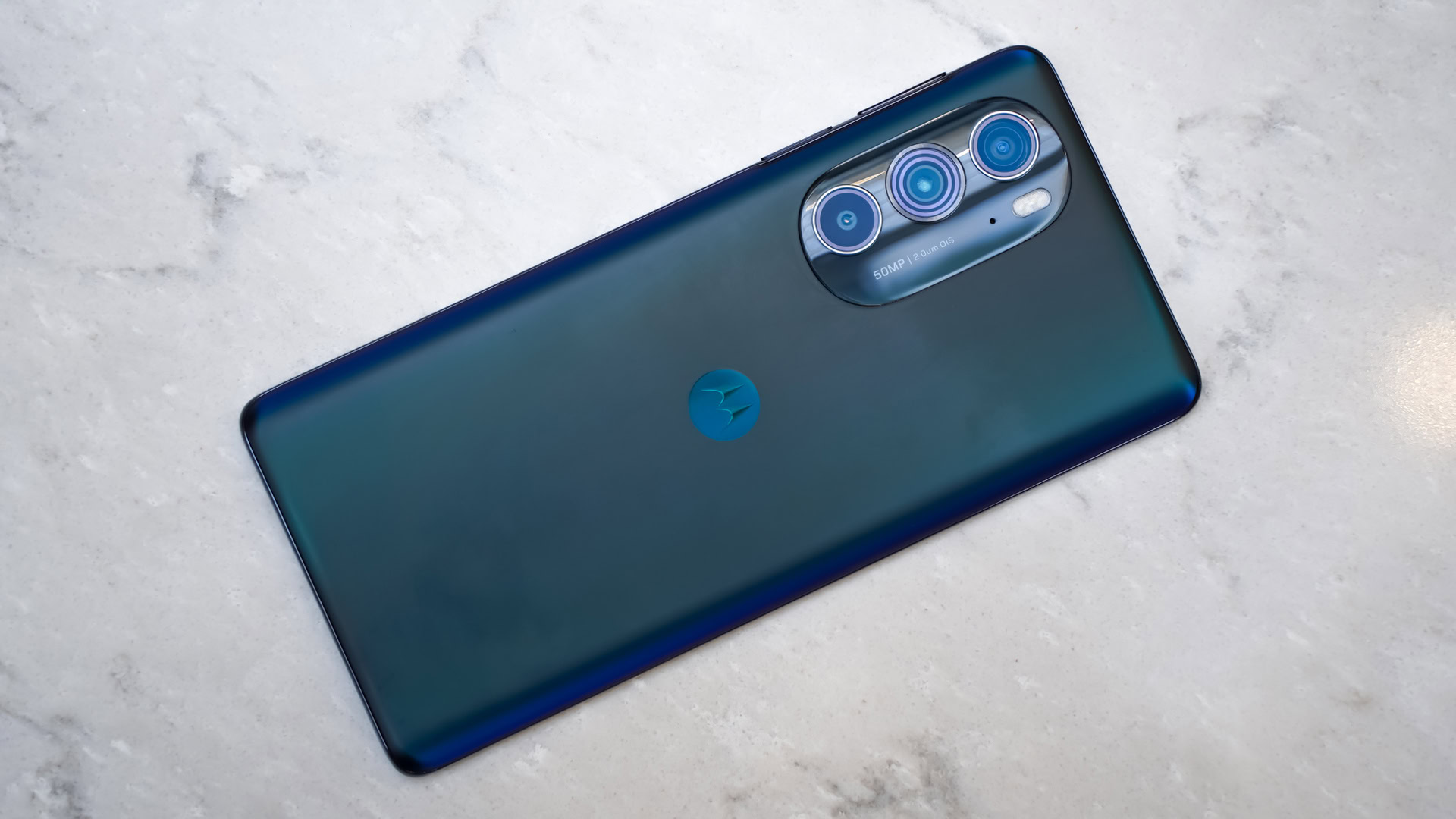
Verizon or not, the Samsung Galaxy S23 Plus ($999.99 at Samsung) is a superior offering. Samsung’s phone has a distinct design, higher-quality materials, equivalent battery life and wireless performance, significantly superior cameras, and a longer update commitment. It’s worth the price differential. You can get most of the S23 Plus experience with the vanilla Galaxy S23 ($799 at Amazon) and even save money compared to the Motorola as long as you don’t mind going with a slightly smaller phone. You can save even more cash by going with the still-stellar Galaxy S22 series.
Motorola has a lot to prove when it comes to the competition.
As far as other and slightly older Android competitors are concerned, there are a handful of older Snapdragon 8 Gen 1 devices worth considering if you don’t mind importing, including the OPPO Find X6 Pro ($1298 at eBay) and the Xiaomi 13 Pro (£1099.99 at Amazon). There’s also the OnePlus 11 ($1296 at Amazon), which meets more of the premium basics.
Then there’s the regular Motorola Edge (2022) ($249 at Amazon). Although it offers less overall than its bigger brother, it may still be a good option for Motorola fans looking for a slightly cheaper device. You get a smaller display, a less powerful chipset, and slower charging, among other things. But on the other hand, the Motorola Edge (2022) comes with a bigger battery, more base storage, and a cheaper price tag. It will surprisingly also get one year of extra OS and security updates.
Perhaps the most important rival to the Motorola Edge Plus (2022) is its direct successor. Unsurprisingly, the new model is called the Edge Plus (2023) ($699 at Amazon), and it rights many of the missteps of last year’s launch. Motorola brought back an aluminum frame, Gorilla Glass Victus on both front and back, and a blistering 165Hz refresh rate. The power doesn’t stop there, with a 5,100mAh battery that easily hits two days of usage and 67W wired charging to fill back up in a hurry. Motorola has even cleaned up its act with the software, trimming down to minimal bloatware and bumping its update commitment to three years of Android versions.
Motorola has a lot to prove when it comes to Apple’s previous line and latest series. Not only does the iPhone 14 Pro ($799.99 at Amazon) have top-quality materials, a superior design, faster performance, and incredible cameras, it has an IP rating, the best software commitment, and more flexible storage options. To be blunt, there are much better phone deals to be had when looking past the Motorola.
Motorola Edge Plus (2022) review: The verdict
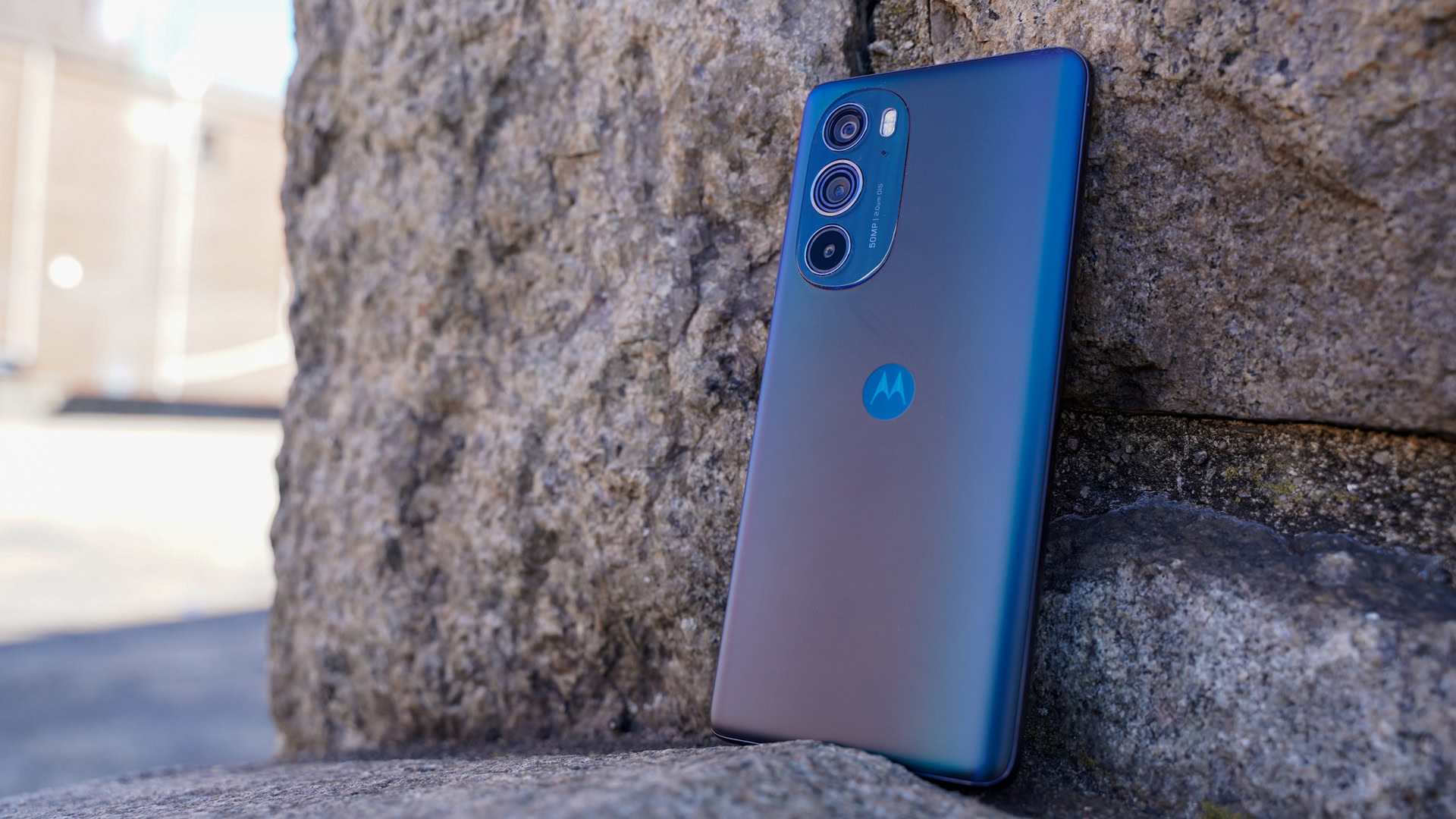
Motorola made some questionable choices when it cobbled together the Edge Plus (2022). The company clearly wants to play in the same space as today’s market leaders — at least when it comes to what it charges for its flagship. The Edge Plus costs the same as many of the best phones in the market. That would be fine if the Edge Plus offered the same high-quality experience that many of those phones do. Sadly, it does not.
Motorola cut some corners and it shows. It could have swapped out the polycarbonate framing for a more appealing aluminum chassis, but it didn’t. It could have engineered the phone in order to score an IP68 rating, but it didn’t. It could choose to better support its devices with ongoing OS and security updates, but it hasn’t. It could have lent more resources to its camera team for a more competitive photography suite, but it didn’t.
This is one Edge that needs some serious sharpening.
There are some redeeming things about the Motorola Edge Plus. The screen is quite good and surely on par with those of competing phones. Battery life is a big winner. The Edge Plus easily outlasts many of the phones in its price range even if it doesn’t charge quite as rapidly as some of them. Motorola’s build of Android is cleaner than most, which means you get less Motorola and more Google in the user interface. You also get excellent audio performance whether you’re listening to the built-in speakers or via Bluetooth.
Motorola could — nay, should — have done a better job with the Edge Plus (2022). It can’t charge $999 for a phone that clearly falls behind other devices at the same price point. Maybe the phone will be worth it to some buyers at the discounted $699 price, but even then it feels like a stretch when the excellent Pixel 6 Pro is available for $650 at the moment. While it’s not without its individual merits, if you’re looking for a true, well-rounded premium experience, you won’t find it in the Motorola Edge Plus (2022).
If you’ve made it all the way to the end of this review and you’re still considering a Motorola flagship, turn your eyes to the Edge Plus (2023). It tops the 2022 model in every meaningful way, and is hopefully a sign of a brighter future from the classic Android brand.
Motorola Edge Plus (2022) top questions and answers
While it’s not a bad phone overall, we think there are much better alternatives available at this price point, including the Galaxy S23 Plus and Pixel 7 Pro.
Sales of the Motorola Edge Plus (2022) in the US kicked off back in March 2022.
The Motorola Edge Plus (2022) is IP52 rated, which makes it resistant to light splashing and gives it a “limited ingress” protection against dust.
No, the Motorola Edge Plus (2022) doesn’t support expandable storage.
Yes, the Motorola Edge Plus (2022) ships with a 30W TurboPower plug in the box.
The Verizon variants of the Motorola Edge Plus (2022) support mmWave as well as sub-6GHz 5G. The unlocked models, however, don’t support mmWave technology.